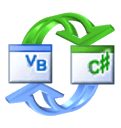Today August 15th, 2012, Microsoft releases the RTM version of Windows 8 for MSDN and TechNet subscribers along with an evaluation version of Windows 8 Enterprise to early adopters and developers; if you want to give a try and not sure about minimum system requirements then this blog post helps you to determine whether your existing PC is capable to install it or not.
Microsoft has kept its promise that Windows 8 won’t require any more hardware than Windows 7. Grant George, Corporate VC of Windows Test repeats on Bulding Windows 8 blog what Microsoft has said in the past. So Windows 8 RTM works great on the same hardware that powers Windows Vista and Windows 7:
- 1 GHz or faster 32-bit (x86) or 64-bit (x64) processor
- 1 GB RAM (32-bit) or 2 GB RAM (64-bit)
- 16 GB available hard disk space (32-bit) or 20 GB (64-bit)
- DirectX 9 graphics device with WDDM 1.0 or higher driver
- Taking advantage of touch input requires a screen that supports multi-touch




 Home
Home